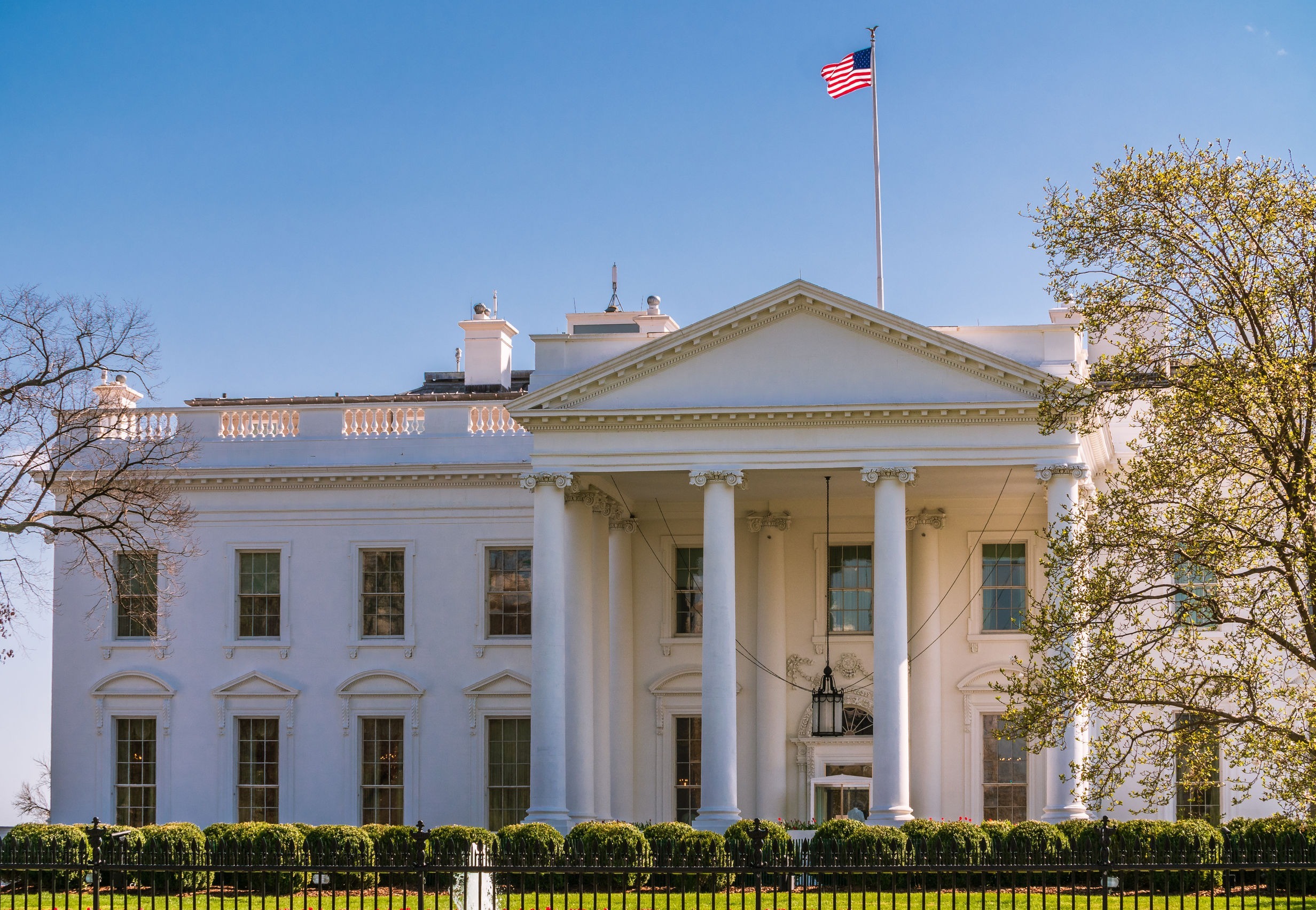What communicators can learn from the White House press secretary
Comms professionals analyze Jen Psaki’s performance, even the #PsakiBomb.

President Joe Biden has said a free and independent press is essential to democracy, a far cry from Donald Trump’s demonization of professional journalists as “enemy of the people.” On his first day in office, Biden also said he would fire anyone on his staff who acted disrespectfully toward colleagues “on the spot.”
Those values were in stark contrast with reality last week, as it was revealed that TJ Ducklo, then the White House deputy press secretary, had threatened to “destroy” a reporter.
Less than a month into the new administration, White House press secretary Jen Psaki has demonstrated a measured approach to crises. As one of the most scrutinized publicists in the world, her statements, mistakes and decisions provide valuable lessons for communications professionals.
“This was so egregious, they had to let Ducklo loose,” says Nicky Lanyi, former journalist and crisis communications executive who now conducts media training for Ragan Consulting Group. “Initial suspension is what they wanted to do because they like him and wanted to keep him around. When it was clear there was a big backlash, they quickly adjusted and cut their losses.”
Here’s the back story.
On Inauguration Day, Ducklo threatened and berated Politico reporter Tara Palmieri, who was doing a story on a potential conflict of interest arising from his romantic relationship with Axios reporter Alexi McCommand.
Psaki did not publicly address the situation until Feb. 12, after Vanity Fair broke the news of Ducklo’s abusive behavior. At her daily press briefing, Psaki said Ducklo would be given a one-week suspension without pay.
As stories circulated, people from all sides of the political spectrum tweeted their outrage. Why wasn’t Ducklo fired for his misogynistic comments given Biden’s zero tolerance for bad behavior? How is threatening a journalist in the Biden administration any different than in the Trump administration? On the other hand, some tweeters showed compassion for Ducklo, who has stage four lung cancer; a woman in human resources said the suspension was the correct first move.
As the news was breaking, RCG Co-Founder and Senior Partner Jim Ylisela predicted the suspension was only the beginning.
“This is the kind of thing that can blow up,” Ylisela says. “When we’re advising companies on media relations, we always tell them crisis communications 101: The more you try to duck the controversy the longer the story becomes.”
By Saturday night, Ducklo was out. While not being forced to resign, one White House staffer told The Washington Post that the administration would not have accepted another outcome.
“We accepted the resignation of TJ Ducklo after a discussion with him this evening,” Psaki said in a statement on Saturday night. “We are committed to striving every day to meet the standard set by the president in treating others with dignity and respect, with civility and with a value for others through our words and our actions.”
Ylisela, a former investigative journalist for The Chicago Reporter and Chicago magazine, believes Psaki is doing an excellent job as a governmental spokesperson—she’s calm, pleasant and willing to admit when she doesn’t know something. “That shouldn’t be extraordinary but given what we’ve been through, it really stands out.”
Psaki’s report card
To assess her performance, he draws on his experience covering former Chicago Mayor Richard M. Daley.
“This is a good lesson for spokespeople. It’s called media relations and it’s the ‘relations’ that actually matter. The press people [for Daley] were awful; their answers to me were such BS,” he recalled. “On more than occasion, I said, ‘Go back to your folks because you don’t actually want me to put that in your story because you’ll look ridiculous.’ I found myself consulting them to come up with something better.”
Last week, the White House drew criticism when it said schools would be considered opened if they teach in-person at least one day a week. The media pushed back.
“I thought Jen handled it very well [by] not getting into a back and forth and by staying on message: ‘We want schools to be open five days a week and to be safe for all children to go back to school, period,’” Ylisela says.
For New York City publicist Lynne Collins, Psaki is “refreshing.” She has discussed Psaki’s performance with six communications professionals and journalists who overwhelmingly feel a “resounding joy” toward her, Collins says.
“She’s confident, not patronizing,” says Collins, whose eponymous consultancy represents creative and media agencies. “She has respect for journalists. It’s an exchange.”
Collins agreed with Ylisela that Psaki’s handling of school issues was astute. She connected with the media and the public on a personal level, acknowledging that she herself has two kids, and emphasized the administration’s commitment to facts, science and the CDC. “She’s kind of shutting it down—it’s not an arbitrary decision,” Collins says. “When you play with facts, it’s hard to argue.”
While Psaki’s decision to wait three weeks to dismiss Ducklo is not “playbook” best practice, Lanyi says she is incredibly skilled at her job. Psaki is certainly not new to positions in the hot seat as former deputy communications director for the Obama administration and later as spokesperson for the State Department.
“One of the Biden administration’s main narratives is that they are going to have a competent, professional executive branch, and she is the face of that,” Lanyi says. “There’s been a lot of pressure on her and she’s held up really well. She’s had daily briefings, which is a change, but it’s a return to bipartisan norms.”
Lanyi and Collins have analyzed her methods:
Informed and disciplined. She comes equipped with a thick, color-coded briefing book, but often doesn’t rely on it because she commands the subject matter. When she doesn’t have an answer, she refers a journalist to the right federal department or promises to provide follow-up information. “Before they get back to their desks, she has delivered the facts to them,” Collins says, citing conversations with journalists.
Serving the narrative. “There’s a norm in American politics that elected officials should be as transparent as possible. At the same, we know that government spokespeople are representing their principal,” Lanyi says. “She has to simultaneously communicate what the president wants to communicate to further his own agenda while also serving the public’s need to know.”
Admitting mistakes. When Bloomberg White House reporter Josh Wingrove asked Psaki if the Biden administration would keep Space Force, she quipped sarcastically: “Wow, Space Force. It’s the plane of today.” After negative media coverage and criticism from elected officials and members of the military branch, she provided a more respectful answer, beginning with: “They absolutely have the full support of the Biden administration.”
#PsakiBomb bridging technique. During the Feb. 5 press briefing, Psaki discussed the American Relief Package. A journalist said: “Given the president’s remarks earlier and his change of tone, it does seem that he is now okay if this does happen just with Democratic support, despite those hopes and despite his calls for unity.” Psaki was quick to reply: “The president ran on unifying the country and putting forward ideas that would help problems we’re facing. He didn’t run on the promise of uniting the Democratic and Republican party into one party in Washington.” Then she reiterated her key message: “This is something that people want.”
“Good communicators find ways to go beyond the answer and get back to their message,” Collins says.
With every press briefing, we are reminded that relationships between reporters and spokespeople can be tense in any industry. No one is perfect; no one always says the perfect thing every time.
“Even when relations are good, there is this built-in adversarial relationship that has to be constantly managed,” Ylisela says. “Media want to ask questions that sometimes you as the spokesperson don’t want to answer. And it goes the other way as well. There are stories that media relations people at companies want reporters to do, and reporters don’t want to do them because they find them self-serving.”
Striking compromise requires trust and mutual respect, which did not exist between mainstream media organizations and Trump Administration press secretaries. Ensuring a healthy media ecosystem is why Ducklo had to go.
“Psaki has had to reset the stage literally and figuratively for this rebrand,” Collins says. “A good brand will connect their audience to a futuristic idea. I think she is setting those tent poles for what the brand will stand for, so we have a vision for the future.”







Notice the “PR Hierarchy of Values” principle emphasized by these nationally respected Ragan experts on Crisis PR.
It can sharply increase management’s respect to point out the “PR Hierarchy of Values” principle: when the public has a reason to do one thing but you want the public to do something different, show how what you want will better produce for the public a benefit that most people see as MORE IMPORTANT.
As Ragan expert Nicky Lanyi points out about the public attitude regarding Ducklo: “Initial suspension is what they wanted to do because they like him and wanted to keep him around.” Also, Ducklo has stage four lung cancer. “But the White House drew criticism when it was clear there was a big backlash,” says Lanyi, and “they quickly adjusted and cut their losses.” This gave the public a benefit that people wanted even more than they wanted to help someone “they like.”
Ylisela observes: “Psaki’s handling of school issues was astute.” The White House “drew criticism when it said schools would be considered opened if they teach in person at least one day a week.” But when Psaki recognized the public’s preference, she pointed out that she herself has two kids and “we want schools to be open five days a week and to be safe for all children to go back to school, period.”
The public’s question regarding public policy decisions is “what in it for us?” So if giant tech companies want to retain freedoms that can mean literally billions a year, it can pay to show the public “here’s what you get” thanks to those freedoms. Do that and politicians are less likely to attack the big guys who give the public big benefits.
Saudi Arabia and UAE would love it if the U.S. gives them the same mutual protection agreements the U.S. has with our 29 NATO allies. Today, most Americans may feel of those Mideast countries “who needs them?” But if they join with Memorial Sloan Kettering to fund a major research program to find a vaccine for cancer, over 100 million Americans may STRONGLY prefer that we have mutual defense treaties with Saudi Arabia and UAE.
Companies and countries, like White House press secretaries, benefit from
recognizing and respecting the PR “Hierarchy of Values” principle. Even before the public asks “what do we get,” the PR astute make known the answer.